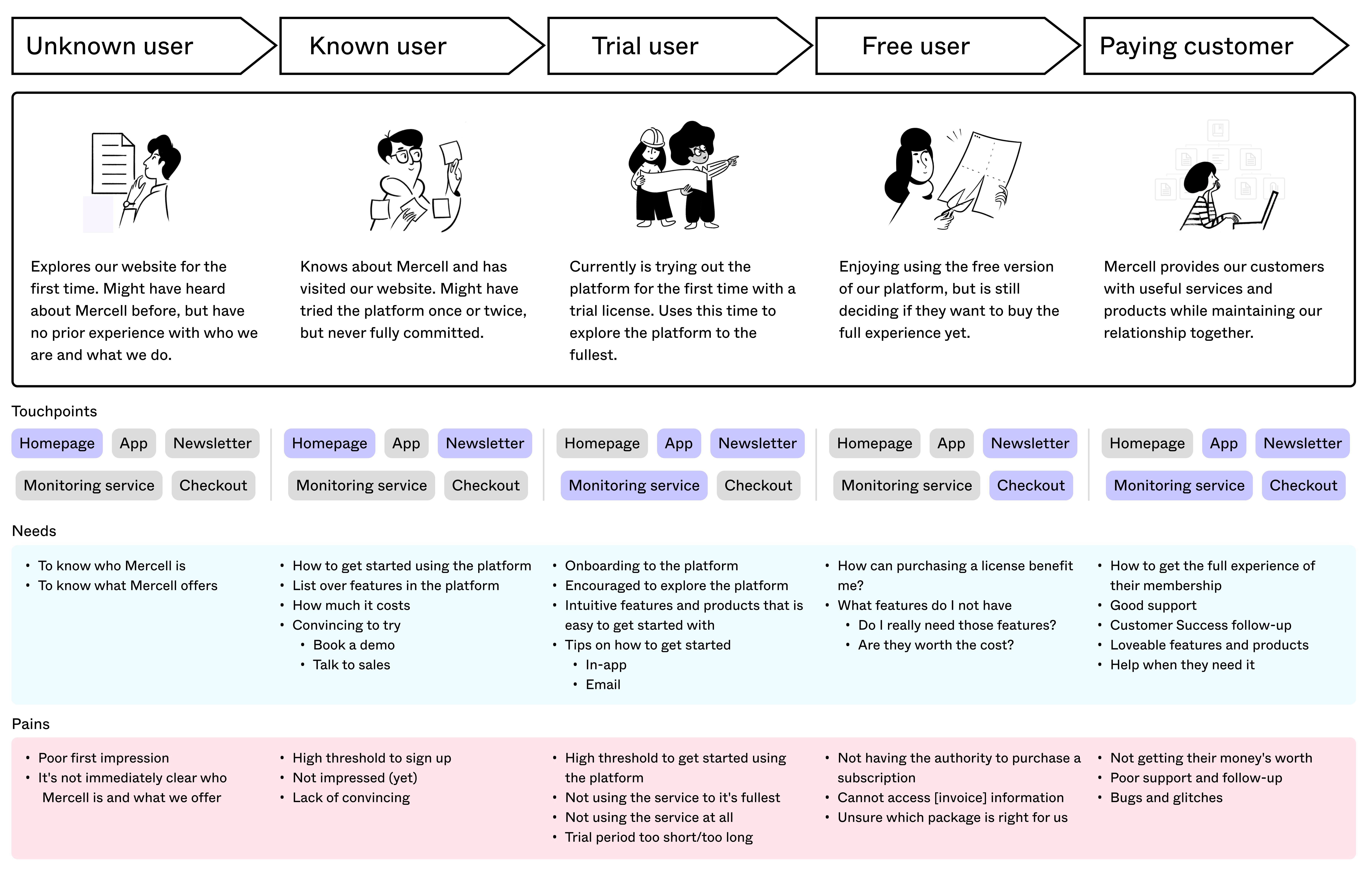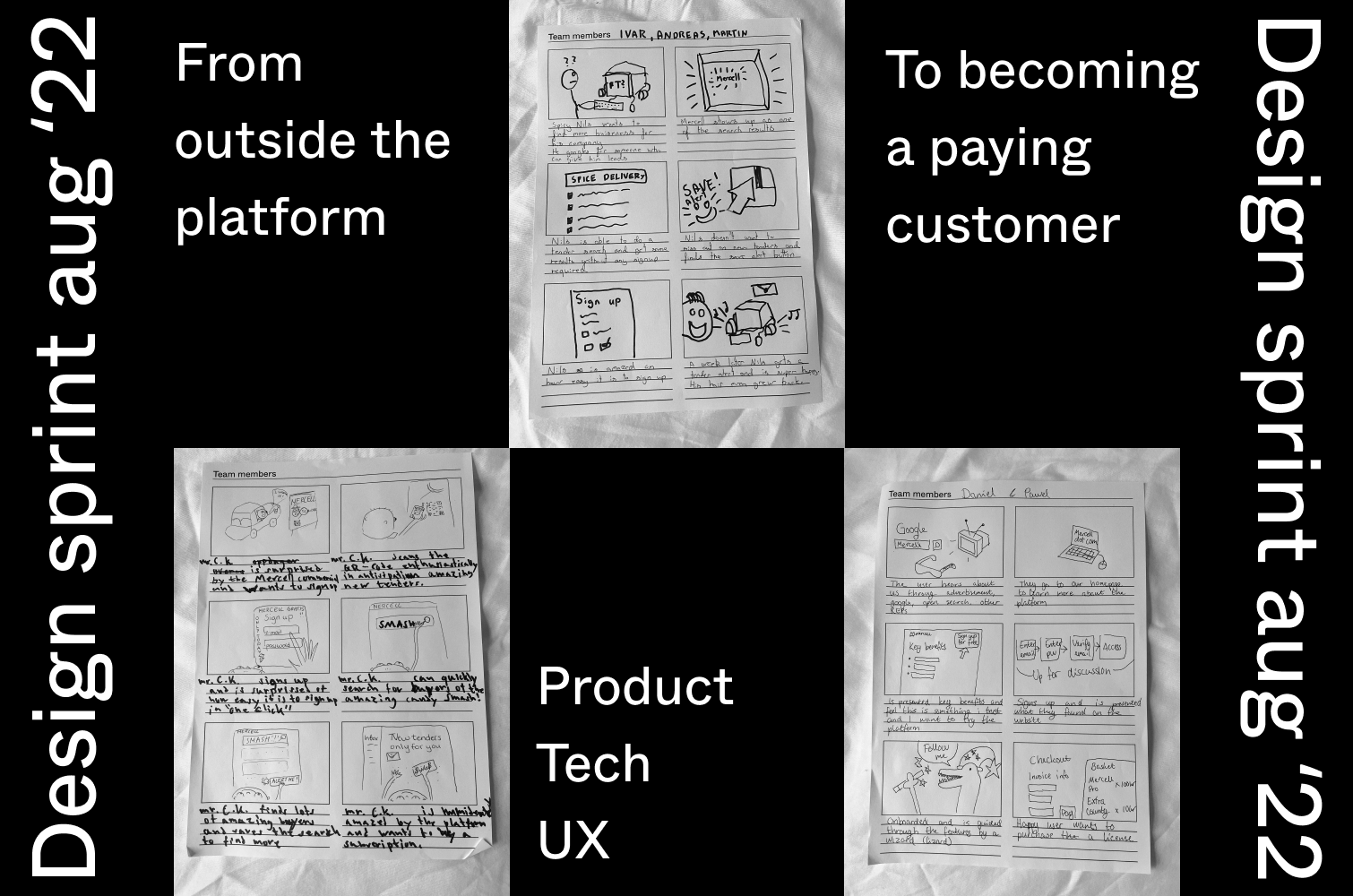Team and domains
My team consists of a project manager, tech lead and developers. We work domain-based, and our domains are authentication, authorization, online sales and distribution & presentation. As the designated UX designer in the team, my main mandate lies with the user.
In the project I'm presenting, my work consists of mapping and designing the user journey from unknown visitor to paying customer. Here I work with a meaningful and rewarding website, a frictionless signup, a good first impression through a trial of the service and an intuitive checkout for purchasing subscriptions, add-ons and products.
Userbase
For over 20 years, Mercell has accumulated their customer base, and at this point it mainly consists of experienced users who know the system inside and out. Some users have been members for several years, and their general opinion is that they know their way in the system, and see no need for radical changes.
But a new generation of users are well on their way. They expect to be able to do more tasks themselves. Such as keeping track of your team members yourself, distributing licenses and roles, and being able to manage your own subscription and add-ons in the service. At this point in time, some might take these features for granted. But as far as we know, this will be available for the first time in the world of e-tendering.
From a business point of view, it also makes sense for Mercell that users should be able to do these tasks themselves. It increases the scalability to new markets where we do not have a established commercial department yet.
Personae and user segments
Segmenting and creating personae for this project was a challenge. As our domains are those that essentially all users have to go through, it made the most sense to divide the user groups into users who want to do things themselves, and users who want us to solve tasks for them. For that reason, two personas were prepared based on user research: Gitte and Henrik.
Gitte has worked with public procurement for some years, and is quite used to how things work. She perfers assistance to do most, if not all tasks herself.
Henrik is relatively new to public procurement, so he has not much history with how Mercell. He is used to perform tasks self-service from other services he uses.
Roles
In our user journey, the user can have different roles at different stages. The goal is to funnel them to the next role, for them to end up as a paying customer.

In order for them to complete the journey, the challenge is to remove friction and make it satisfactory, but at the same time ensure that their needs are taken care of. The user must also understand the value of moving on, and want it. Otherwise, we risk them dropping out, going to competitors, giving up, ...
Based on where in the journey the user is, it must be clearly communicated what the next step entails, and how to get there. This can be done through information architecture with intuitive steps that that makes sense for the user.
Mapping the user journey




















